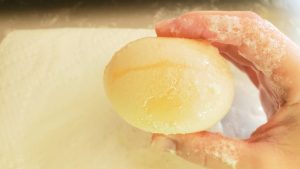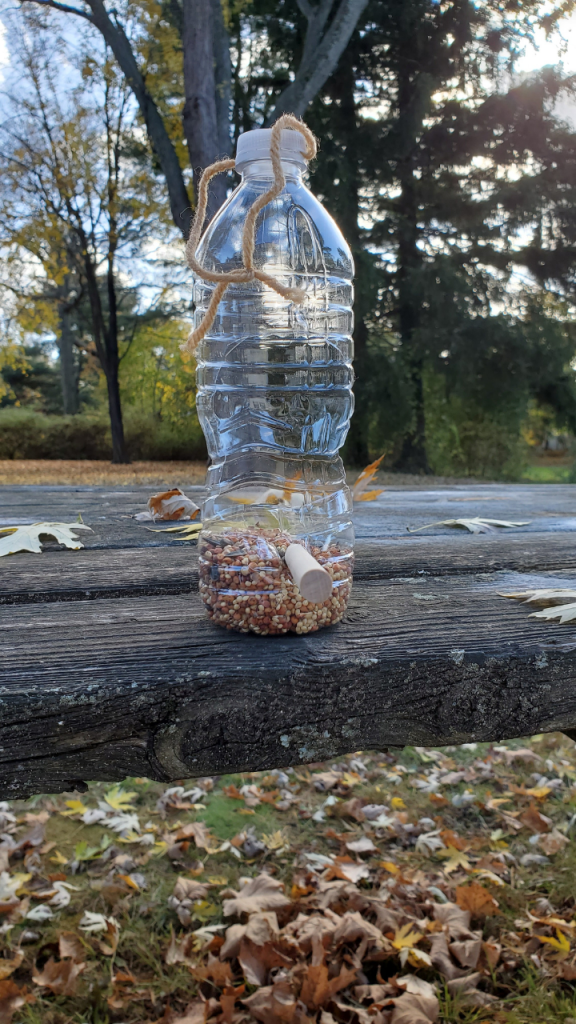Science and Technology/Engineering
16 Kindergarten
Lauren Weiss and Margaret Krone
Reasons for Change
In kindergarten, students build on early experiences observing the world around them as they continue to make observations that are more quantitative in nature and help them identify why some changes occur. Students begin to learn to use these observations as evidence to support a claim through growing language skills. They learn that all animals and plants need food, water, and air to grow and thrive and that the fundamental difference between plants and animals is a plant’s ability to make its own food. Students build their quantitative knowledge of temperature in relation to the weather and its effect on different kinds of materials. They observe that the amount of sunlight shining on a surface causes a temperature change and they design a structure to reduce the warming effects of sunlight. They investigate motions of objects by changing the strength and direction of pushes and pulls. They provide examples of plants and animals that can change their environment through their interactions with it. In kindergarten science, students begin to identify reasons for changes in some common phenomena.[1] [2]
ESS2. Earth’s Systems
- K-ESS2-2. Construct an argument supported by evidence for how plants and animals (including humans) can change the environment.
Falcon Curriculum Core Categories
Conservation and Policy
Falcon Curriculum Essential Question
How have humans changed the environment for peregrine falcons?
Materials
| For Instructors | For Students |
|---|---|
|
|
Sample Plan
Watch the Falcon Curriculum: Conservation, Beginner videos. Talk about how humans used DDT to change the environment by getting rid of insects that ate their crops and made them sick, but DDT was bad for the environment and when peregrine falcons ate the birds that ate the bugs that had DDT on them, it made the falcons lay soft-shelled eggs that couldn’t hatch.
Do the Soft Shelled Egg Experiment:

- Have them all feel how hard an eggshell is normally (you can use a hardboiled one so it doesn’t break all over them).
- Pour 1 cup vinegar into clear jar/container.
- Add the egg.
- Talk about what happens (bubbles will rise from the egg).
- Leave the egg in the vinegar for 1 day.
- Remove the egg and have them all feel it (soft). IMPORTANT: if you are using a raw egg and not hardboiled, make sure the students are gentle with it when they touch it, or it will break all over.
- Explain that this is like what happened with the peregrine falcon eggs.
ESS3. Earth and Human Activity
- K-ESS3-1(MA). Obtain and use information about weather forecasting to prepare for, and respond to different types of local weather.
Falcon Curriculum Core Categories
Animal Behavior
Falcon Curriculum Essential Question
How does weather affect peregrine falcons?
Materials
| For Instructors | For Students |
|---|---|
|
|
Sample Plan
Watch the Falcon Curriculum: Behaviors video, as well as videos of the Falcon Cam, and look at photos. Talk about how falcons pant when it’s hot and fluff up their feathers when it’s cold. Also talk about how, if it’s too cold, eggs could freeze and not hatch. That is why the new nest box on the W. E. B. Du Bois Library (2022) has more covering on the sides: to protect the falcons and their eggs from the weather.
Fold a piece of paper in quarters and have students draw:
- Top Left: what falcons do when it’s hot
- Top Right: what students do when it’s hot
- Bottom Left: what falcons do when it’s cold
- Bottom Right: what students do when it’s cold
LS1. From Molecules to Organisms: Structures and Processes
- K-LS1-1(MA). Observe and communicate that animals (including humans) and plants need food, water, and air to survive. Animals get food from plants or other animals. Plants make their own food and need light to live and grow.
Falcon Curriculum Core Categories
Anatomy and Life Cycle
Falcon Curriculum Essential Question
How do falcons eat?
Materials
| For Instructors | For Students |
|---|---|
|
|
Sample Plan
Watch the Falcon Curriculum: Prey and Hunting videos. Look at images of the prey. Ask students if they’ve ever seen or heard some of them.
Take a nature walk and go birdwatching/bird listening.
Make recycled bottle bird feeders to attract these birds and have students start to be able to identify local species. Compare the birds they see at the bird feeders to falcons (appearance, sound, etc.).
- Cut a large hole on one side of the plastic bottle for the birds to feed from, and 2 smaller circular holes opposite each other below it for the perch to go through (adults may want to do this part).
- Put the perch through those 2 small circular holes.
- Fill the bottle with birdseed up to the large hole so it doesn’t spill out.
- Tie the string around the top of the bottle.
- Hang it from a tree and observe the birds that use it.

LS1. From Molecules to Organisms: Structures and Processes
- K-LS1-2(MA). Recognize that all plants and animals grow and change over time.
Falcon Curriculum Core Categories
Anatomy and Life Cycle
Falcon Curriculum Essential Question
How do falcons grow up?
Materials
| For Instructors | For Students |
|---|---|
|
|
Sample Plan
Watch the Falcon Curriculum: Life Cycle videos. See how the chicks develop into juveniles and then adults. Talk about the similarities and differences between them (color, etc.). If possible, this lesson should be taught between March-June, when the falcon cam livestream is up, so students can observe the chicks grow up on camera.
Teach them “Head, Feathers, Wings, and Feet” with motions towards each part mentioned:
“Head, Feathers, Wings and Feet”
(To the tune of “Head, Shoulders, Knees, and Toes”)
Head, feathers, wings, and feet
Wings and feet
Head, feathers, wings, and feet
Wings and feet
Eyes and tail and talons and beak
Head, feathers, wings, and feet
Wings and feet
Do the Hatching Chick Craft:
- Take one paper plate regular side up.
- Have students paste in the oval onto the inside center of the plate and decorate it like a chick with cotton balls for down, feathers for wings, triangles for beaks, google eyes, etc.
- Have students decorate the outside of the other paper plate to look like a falcon egg (pinkish-brown, speckles, etc.).
- Help students cut the other paper plate in half in a zigzag fashion to resemble 2 halves of a breaking eggshell.
- Paste the bottom half over the bottom half of the chick plate.
- Use a brad fastener to attach the top half to the chick plate so it can open and close, looking like the chick is hatching.

PS2. Motion and Stability: Forces and Interactions
- K-PS2-1. Compare the effects of different strengths or different directions of pushes and pulls on the motion of an object.
Falcon Curriculum Core Categories
Animal Behavior
Falcon Curriculum Essential Question
How do birds fly? What forces do they use/work against to fly?
Materials
| For Instructors | For Students |
|---|---|
|
|
Sample Plan
Watch the Falcon Curriculum: Flight videos. Talk about how birds use their wings to push against the air, which allows them to fly. Talk about the different types of bird wings and how they make birds fly differently from each other.
Do the flying bird craft as demonstrated in the first part of the Crafts with Toddler video.
Do some of the flying-inspired bird yoga poses with them.
Media Attributions
- Soft Shelled Egg Experiment Results
- Recycled Bottle Bird Feeder © Lauren Weiss is licensed under a CC BY (Attribution) license
- Hatching Chick Craft © Lauren Weiss is licensed under a CC BY (Attribution) license
- Massachusetts Department of Elementary and Secondary Education (2022). SCIENCE AND TECHNOLOGY / ENGINEERING Grades Pre-Kindergarten to 12 Massachusetts Curriculum Framework. https://www.doe.mass.edu/frameworks/current.html ↵
- Falcon Curriculum Common Core Standards mapping by Margaret Krone. Falcon Curriculum Lesson Plans by Lauren Weiss. © 2022 CC BY 4.0 ↵

